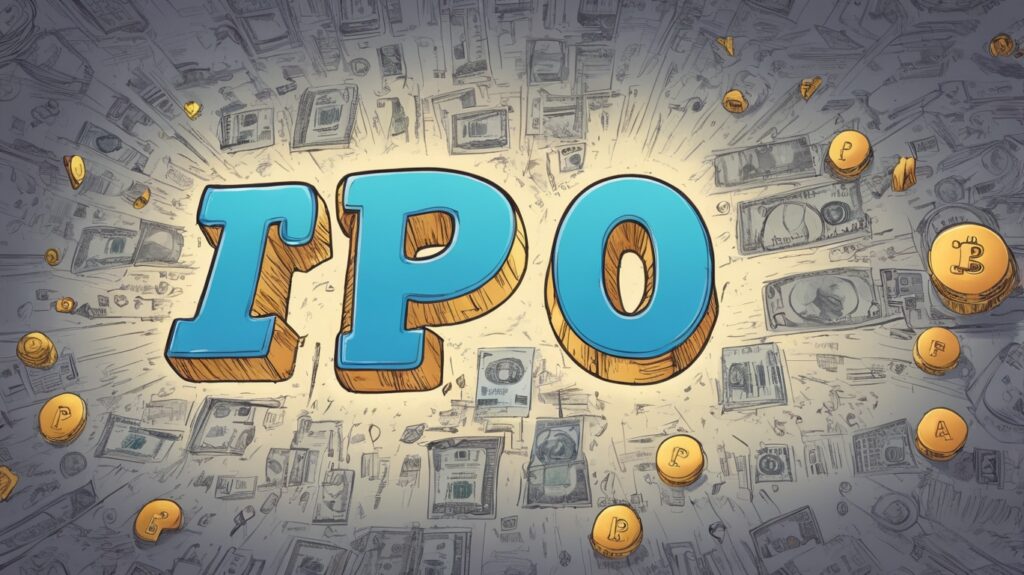IPO Grey Market Premium Today – Latest IPO GMP Updates
The IPO market is buzzing with activity, and savvy investors are turning their attention to grey market premiums (GMP) to gauge the potential listing performance of upcoming and ongoing IPOs. GMP reflects the premium investors are willing to pay in the unofficial market, offering a glimpse into market sentiment and anticipated demand. This week, prominent IPOs such as Inventurus Knowledge, International Gemological, Yash Highvoltage, and Hamps Bio are set to open for bidding. These offerings are driving significant excitement, with grey market activity highlighting investor confidence and potential listing gains. For example, Vishal Mega Mart’s strong GMP indicates high demand, positioning it as one of the top prospects to watch closely. Stay tuned with us for IPO Grey Market Premium Today for these and other IPOs, helping you make informed investment decisions based on the latest data.
IPO Grey Market Premium Today
| IPO Name | GMP (₹) | Issue Price (₹) | Expected Gain | Type | Dates |
|---|---|---|---|---|---|
| NACDAC Infrastructure | ₹30 | ₹35 | 88% | BSE SME | 17-19 Dec |
| Identical Brains Studios | ₹30 | ₹54 | 62% | NSE SME | 18-20 Dec |
| Solar91 Cleantech | – | ₹- | -% | BSE SME | 24-27 Dec |
| Rosmerta Digital Services | ₹20 | ₹147 | 14% | BSE SME | – |
| International Gemological | ₹95 | ₹417 | 24% | Equity | 13-17 Dec |
| Yash Highvoltage | ₹127 | ₹146 | 90% | BSE SME | 12-16 Dec |
| Hamps Bio | ₹- | ₹51 | -% | BSE SME | 13-17 Dec |
| NACDAC Infrastructure | ₹- | ₹35 | -% | BSE SME | 17-19 Dec |
| Rosmerta Digital Services | ₹15 | ₹147 | 14% | BSE SME | 2024 |
Table of Contents
What is Grey Market Premium (GMP)?
Grey Market Premium (GMP) refers to the difference between the issue price of an Initial Public Offering (IPO) and the price at which shares of the same IPO are traded in the unofficial grey market before the shares are listed on the stock exchange. Essentially, GMP serves as an indicator of investor sentiment, revealing whether an IPO is expected to list at a premium or discount compared to its issue price.

How Does IPO GMP Work?
The grey market operates independently of the stock exchanges, allowing investors and traders to buy and sell shares for an upcoming IPO at a premium or discount. Here’s a step-by-step breakdown of how this process works:
Initial Interest: When it is revealed that an IPO is taking place, investors start showing their concern to take part in the deal.
Trading on the grey market: Prices are quoted below issue price depending on demand. The difference of the issue price and the grey market price is termed as GMP.
Kostak Rate: The price people pay to get an allotment, through back door entry of a share, of the company which is coming with an IPO. It provides exit options for investors to sell their allotment rights way before the listing of shares, giving birth to speculative trading.
Sauda Subject to: It is nothing but a conditional trading order where you promise to buy the shares after getting a successful allotment of the shares in famous IPOs. This represents how much interest their shares have.
How to Calculate Grey Market Premium?
Grey market premium is calculated by subtracting the issue price of the IPO from its grey market trading price.
For example:
- If an IPO has an issue price of ₹100 and is trading at ₹120 in the grey market, the GMP would be:
- GMP = ₹120 – ₹100 = ₹20.
- The percentage GMP can be calculated as:
- GMP % = (GMP ÷ Issue Price) × 100
- GMP % = (₹20 ÷ ₹100) × 100 = 20%.
How GMP Influences IPO Investment Decisions
Low or Negative GMP: A low or negative GMP reflects weak investor sentiment and could indicate that the IPO might list at a discount to the issue price. This may deter investors from applying for such an IPO, as the market is not optimistic about its future performance.
Strong GMP: A high GMP suggests strong demand for an IPO, often translating to a higher listing price. This could be a sign of investor confidence, making it an attractive opportunity for those interested in short-term gains or long-term investments.
Key Terms Related to Grey Market Premium (GMP) and IPOs
When discussing Grey Market Premium (GMP) and Initial Public Offerings (IPOs), several key terms are commonly used to understand how GMP affects the performance and sentiment around an IPO. Here’s an explanation of some of the most important terms related to GMP and IPOs:
1. Grey Market (GM)
The Grey Market is an unofficial, unregulated market where stocks of upcoming IPOs are traded before they are officially listed on stock exchanges. This market is not overseen by any regulatory body, making it prone to speculation. Grey Market Premium is the most common indicator used to track investor sentiment in this market.
2. Issue Price
The Issue Price is the price at which an IPO is offered to investors in the public market. This is the price that investors will pay when applying for shares of an IPO. The GMP helps investors estimate whether the IPO will list at a price higher (premium) or lower (discount) than the issue price.
3. Listing Price
The Listing Price refers to the price at which a stock opens for trading on the stock exchange on its listing day. A high GMP usually suggests that the stock will open at a premium to the issue price, while a low GMP or negative GMP could indicate that the stock might list below its issue price.
4. Subscription Rate
The Subscription Rate refers to how many times the IPO is oversubscribed, i.e., how many shares are applied for relative to the number of shares available. A high subscription rate typically indicates strong demand, which can lead to a higher GMP. The GMP reflects this demand even before the IPO officially lists on the exchange.
5. Kostak Rate
The Kostak Rate is the premium paid in the grey market for securing an allotment in an IPO. It’s essentially the price that one would pay to purchase an IPO allocation without applying for the shares. Investors pay this rate to secure shares in popular IPOs with expected high demand.
6. Listing Gain
Listing Gain refers to the profit an investor makes when the IPO’s listing price is higher than the issue price. This is often associated with the GMP, as a higher GMP typically suggests higher listing gains. Investors are keen to track GMP as it helps predict the possible listing gain.
7. Premium / Discount
Premium and Discount refer to the price difference between the issue price and the grey market price.
- Premium: When the IPO’s grey market price is higher than its issue price, it indicates a potential gain for the investor after the listing.
- Discount: Conversely, if the grey market price is lower than the issue price, it indicates the possibility of the stock opening at a loss, reflecting weak demand in the grey market.
8. IPO Grey Market Premium (GMP)
GMP is the difference between the grey market price and the issue price of an IPO, and it is a critical indicator used by investors to gauge market sentiment. If an IPO is expected to list at a higher price than its issue price, the GMP will be positive. For example, if the issue price is ₹100 and the grey market price is ₹120, the GMP is ₹20.
9. Unlisted Shares
Unlisted Shares are shares of companies that are not yet traded on the stock exchange. In the context of IPOs, these shares are often traded in the grey market prior to the official listing. The GMP is derived from the trading prices of these unlisted shares.
10. Subscription Categories
IPOs are generally categorized by the type of investors who can participate, such as Qualified Institutional Buyers (QIBs), Non-Institutional Investors (NIIs), and Retail Investors. A higher proportion of QIBs subscribing to an IPO often indicates higher demand, which may influence the GMP and subsequent listing gains.
11. Listing Day
Listing Day is the day when an IPO officially starts trading on the stock exchange. Investors eagerly watch for the listing price, as it determines the listing gain or loss. GMP can offer clues as to whether the IPO will open at a premium or discount on the listing day.
12. GMP Percentage
The GMP Percentage refers to the percentage of the GMP compared to the issue price. It gives investors an idea of the expected listing gain in relative terms. For example, a GMP of ₹50 on an issue price of ₹100 implies a 50% GMP.
13. Oversubscription
Oversubscription occurs when more applications are made for shares than the number of shares available in an IPO. A high oversubscription rate often indicates that the GMP will be high, as it reflects significant demand and investor optimism about the IPO’s future performance.
14. Flip or Hold Strategy
Investors often consider two strategies when applying for an IPO:
- Flip Strategy: Sell the shares as soon as they are listed to lock in short-term gains. GMP is a critical factor in this decision, as a high GMP usually indicates good listing gains.
- Hold Strategy: Hold the shares for the long term, expecting the price to rise further post-listing. The GMP can also influence this decision, as a stable GMP could indicate strong demand and potential for further price appreciation.
Bottom Line
The Grey Market Premium (GMP) is an essential tool for IPO investors, providing insights into the demand and market sentiment surrounding a new offering. By understanding how to check GMP, how GMP is calculated, and the meaning behind grey market premiums, investors can make more informed decisions regarding their IPO investments. Regularly tracking GMP will help you assess whether an IPO is likely to offer significant listing gains or if it might underperform.
Stay updated on the latest GMP values and trends by checking reliable sources and platforms that track grey market activity.



















